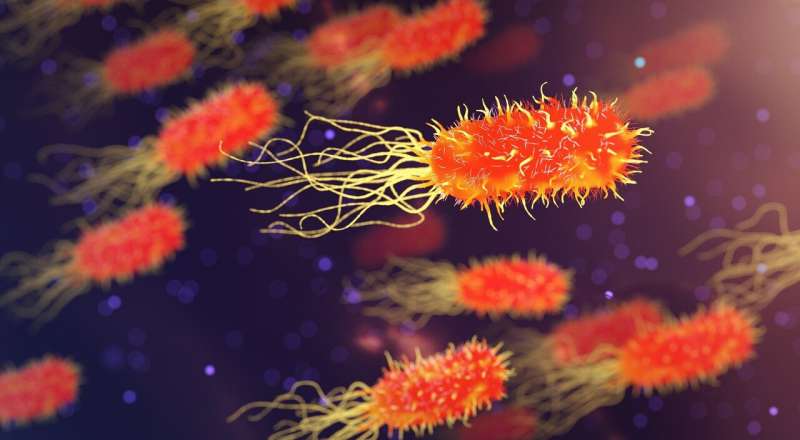

Researchers from Skoltech, MSU, Sirius University of Science and Technology and Institute of Bioorganic Chemistry of RAS investigated the role of two bacterial genes that aids in maintaining the integrity of ribosomal RNA against an RNA-damaging ribotoxin produced by other bacteria. They confirmed the role of both genes in the reparation process of broken RNA and went on to show that even one of them alone, may be sufficient in rendering the protective effect. These findings will help scientists better understand bacterial defense mechanisms and how to overcome them, particularly in this era wherein multi-drug resistance pathogens persist in an environmental ecosystem. The study was published in the International Journal of Molecular Sciences.
Most microbial communities are represented by a variety of species and strains that constantly compete for resources that are limiting. Scarcity of resources and push for space provoke an arms race between bacteria: some species have evolved to acquire a variety of toxins which they deploy under stress to potential contenders, in response others may have evolved tools to combat their action. Often, the key molecular machinery of the cell, in particular, the protein synthesis system, is one such susceptible target by a range of noxious toxins. It has been previously shown that the action of a number of toxins damages the integrity of the RNA molecule(s) in the composition of ribosomes—cellular factories for protein production.
“Bacterial cells are constantly trying to survive, they always try to be dominant in an ecosystem. To achieve supremacy they have to be able to resist other weapons deployed by menacing bacteria. Since RNA is often targeted, scientists are speculating on potential backup systems that bacteria may utilize under when RNA integrity is compromised,” explains Tinashe Prince Maviza, Skoltech Ph.D. student and the first author of the study.
Colicins are a class of bacterial toxins released into the environment to damage other bacterial strains. Different types of colicins act on different elements of cellular machinery. Colicin E3 ribotoxin is the one that mediates cleavage of the ribosomal RNA (rRNA) molecule in the decoding center of the ribosome—the site where information about protein structure coded in mRNA is being read and protein synthesis occurs. To deal with this critical breakdown, which eventually causes cell demise, bacteria seemingly may have evolved systems to repair damage by colicins.
It has been previously shown in vitro that two neighboring genes, prfH and rtcB2, that are sporadically spread across different bacterial strains, potentially deal with the ribosome damage. In this article, the authors model that when the ribosome is damaged by colicin E3, PrfH helps to disassemble the ribosome into separate subunits, which subsequently allows RtcB2 to help restore the broken substrates of the decoding center.
In the new study, scientists demonstrated that these two genes confer resistance to the E3 colicin toxicity in vivo. They experimentally demonstrated that if both genes are removed from the Escherichia coli genome, bacteria can no longer resist colicin E3 effect. But if both of them are reintroduced to the cell in a plasmid—a small piece of genetic material, the colicin E3 resistance is restored. Interestingly, overexpression of rtcB2 turned out to be sufficient for anti-colicin effect. These results highlight a counter-conflict system that may have evolved to thwart colicin E3 activity. In the future, scientists will have to understand in detail the molecular mechanisms that provide this protection.
“We have entered the era of bacterial multidrug resistance, wherein bacteria develop resistance to several antimicrobial drugs. Therefore, scientists try to unravel mechanisms that help cells to thrive and persist under a variety of conditions and treatments. Moreover, deconvoluting some of these mechanisms could be important for drug discovery, and/or species targeted therapy,” Tinashe concludes.
For bacteria, a small genome means some serious decluttering—even in the ribosome
Tinashe P. Maviza et al, RtcB2-PrfH Operon Protects E. coli ATCC25922 Strain from Colicin E3 Toxin, International Journal of Molecular Sciences (2022). DOI: 10.3390/ijms23126453
Skolkovo Institute of Science and Technology
Citation:
Scientists have discovered a new type of bacterial protection against toxins (2022, July 18)
retrieved 19 July 2022
from https://phys.org/news/2022-07-scientists-bacterial-toxins.html
This document is subject to copyright. Apart from any fair dealing for the purpose of private study or research, no
part may be reproduced without the written permission. The content is provided for information purposes only.